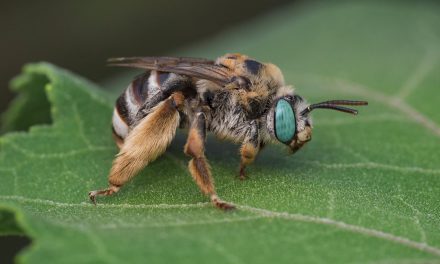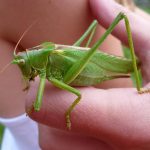Welcome to the fascinating world of insects! Have you ever wondered, “What is an insect?” Simply put, insects are a type of arthropod, which means they have an exoskeleton, a segmented body, and jointed legs. They are the most diverse group of animals on Earth, with over one million known species. Insects come in a vast array of shapes, sizes, and colours, making them a fascinating subject to study. In this article, we will explore the characteristics of insects, their importance in the ecosystem, and what makes them so unique.
What are insects?
Insects are invertebrate animals that belong to the phylum Arthropoda and the class Insecta. They are characterised by three body segments (head, thorax, and abdomen), six legs, and a pair of antennae. Insects are the most abundant group of animals on Earth and can be found in nearly every habitat, from deserts to rainforests and from freshwater to the ocean’s depths.
Insects have incredible diversity when it comes to their physical appearance. They come in all shapes and sizes, ranging from the tiny parasitic wasps that are less than a millimetre long to the giant beetles that can grow up to 17 centimetres in length. In addition to their size, insects also have a wide range of colours and patterns, making them incredibly visually striking. Some insects, like butterflies and moths, have wings that are covered in intricate patterns, while others, like ants and bees, are covered in fuzzy hairs.
These unique physical characteristics serve different purposes for different insects. For example, some insects use their colours and patterns as a form of camouflage, allowing them to blend into their surroundings and avoid predators. Others use bright colours as a warning signal to potential predators, indicating that they are toxic or dangerous to eat. Finally, some insects use their colours and patterns as a way to attract mates, using bright and eye-catching displays to show off their fitness and desirability.
Insects also have a wide range of habitats and lifestyles. Some insects, like ants and bees, live in large social colonies, working together to gather food, raise young, and defend their homes. Other insects, like cockroaches and termites, live in large groups but do not have the same level of social organisation. Finally, some insects, like butterflies and moths, live solitary lives, only coming together to mate and reproduce.
Overall, the incredible diversity of insect life is one of the things that makes them so fascinating to study and observe. Whether you are admiring the intricate patterns on a butterfly’s wings or watching a colony of ants at work, there is always something new and interesting to discover about these incredible creatures.

insect classification
Insect classification is the process of grouping insects into different categories based on their physical characteristics, behaviours, and genetic relationships. Insects are classified into different groups based on their anatomical and biological features. Here are the main groups of insects:
Class Insecta
This is the largest group of insects, with over one million known species. It includes most of the common insects we see, such as butterflies, bees, flies, beetles, and ants.
Order Diptera
This order includes insects with two wings, such as flies and mosquitoes.
Order Lepidoptera
This order includes insects with scales on their wings, such as butterflies and moths.
Order Hymenoptera: This order includes insects with two pairs of wings, such as bees, wasps, and ants.
Order Coleoptera
This order includes insects with hardened front wings, such as beetles.
Order Hemiptera
This order includes insects with sucking mouthparts, such as aphids and cicadas.
Order Orthoptera
This order includes insects with strong hind legs for jumping, such as grasshoppers and crickets.

Order Odonata
This order includes insects with elongated bodies and two pairs of wings that can move independently, such as dragonflies and damselflies.
Insect classification is constantly changing as scientists learn more about the genetic relationships between different species. Advances in DNA sequencing have allowed scientists to better understand the evolutionary history of insects, and as a result, insect classification is becoming more accurate and precise.
Characteristics of Insects
Insects possess a plethora of unique characteristics that distinguish them from other animals. Below are some of the most important ones:
Exoskeleton
Insects have a tough, protective outer covering called an exoskeleton, which provides support and protection to their bodies.
Metamorphosis
Many insects undergo metamorphosis, which is a process of transformation from an immature form to an adult form. There are two types of metamorphosis:
- complete metamorphosis (where the insect goes through four distinct stages: egg, larva, pupa, and adult).
- incomplete metamorphosis (where the insect goes through three stages: egg, nymph, and adult).
Three pairs of legs
Insects have three pairs of legs that are attached to their thorax. These legs allow them to move around quickly and with agility.
Antennae
Insects have a pair of antennae that they use for sensing their environment, detecting food, and communicating with other insects.
Wings
Many insects have wings that allow them to fly or glide. Some insects have two pairs of wings, while others have only one pair.
Small size
Insects are generally small in size, which allows them to occupy different niches and habitats. Their small size also allows them to conserve energy and resources.
Insect evolution
Insects are one of the oldest groups of animals on Earth, with a history that dates back to at least the Devonian period, between 400 and 360 million years ago. By the Carboniferous period, which lasted from 360 to 285 million years ago, insects had evolved the ability to fly, a feat that would prove highly successful and lead to their greatest diversity during the Permian period, 285 to 245 million years ago.
Flight remains a unique adaptation among arthropods, and by the Permian, many of the basic physical structures of modern insect orders had evolved. Fossils of more recently evolved groups like the Hymenoptera (ants, bees, wasps, and sawflies) and Lepidoptera (butterflies and moths) can be traced back to the Jurassic period, between 210 and 145 million years ago, while the Mantodea (praying mantids) appeared in fossilised amber from the Eocene period, which lasted from 60 to 35 million years ago.

Importance of insects
Insects play a crucial role in the ecosystem. They are important pollinators, predators, decomposers, and food sources for other animals. Without insects, many plants would not be able to reproduce, and entire food chains would be disrupted.
Insects play an important role in the ecosystem and our lives. Here are some of the ways insects contribute to our world:
Pollination
Insects like bees, butterflies, and moths are important pollinators of plants. They help to transfer pollen from the male to the female parts of the flowers, which is necessary for the plants to produce fruit and seeds.
Pest control
Many insects, such as ladybirds and praying mantises, are natural predators of pests like aphids and caterpillars. They help to control the populations of these pests, which can damage crops and gardens.
Decomposition
Insects like beetles and flies play an important role in the decomposition of dead plants and animals. They help to break down organic matter and recycle nutrients back into the ecosystem.
Food source
Insects are an important source of food for many animals, including birds, fish, and other insects. Humans also use some insects, like bees and silkworms, for food and other products.
Final thoughts
Insects are amazing creatures that are found all over the world. They have unique characteristics that set them apart from other animals and play important roles in our ecosystem. By learning about insects, we can gain a better appreciation for the diversity and complexity of life on Earth.















